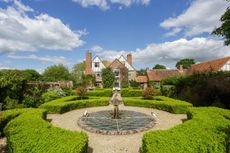International buyers drawn to Scotland
The weak pound and the promise of fantastic sport are attracting buyers from overseas to Scottish properties, finds Holly Kirkwood


Despite being a small country, Scotland enjoys considerable international influence. Last year, the Scottish Executive declared 2009 ‘a year of homecoming', encouraging expatriates and those with Scottish ancestry to visit. The Executive calculated that the diaspora is 40 million people-nearly 10 times that of the current population of Scotland itself.
It's this figure that's key to understanding the demand from the international market for Scottish property. ‘We have a constant stream of expatriate Scots who have been working abroad,' explains Matthew Sinclair of property-search agent Saint Property (0131-478 4533). ‘They want to buy either a second home or a retirement property, and buyers like these are commonly interested in areas where they still have family connections.'
Mr Sinclair estimates that his overseas buyers account for 28% of his business, with 15% from Europe, 8% from the USA and 5% originating from Asia.
Outside of those with a personal connection to Scotland, Russian and Middle Eastern buyers have been known to buy Scottish estates, but the trickle that began two or three decades ago never turned into the fast-flowing stream some expected it might. Most, although not all, of these buyers are attracted by the sport.
As William Jackson from CKD Galbraith (01738 456061) points out: ‘Scotland has been a place to come for sport for 200 years. If it's traditional sport you're after-pheasant, deer and grouse-this country has an infrastructure few others can offer, and fewer restrictions than on the Continent.'
Currency fluctuations
Increased interest from overseas has been stimulated further by the weak position of the pound, according to Robert McCulloch from Strutt & Parker (0131-226 2500): ‘Three years ago, two out of 10 buyers would be from overseas; for 2010, it's doubled to four.' He believes that lowland Europe is a great source of ongoing interest in Scottish property.
Sign up for the Country Life Newsletter
Exquisite houses, the beauty of Nature, and how to get the most from your life, straight to your inbox.
Direct flights (and small Scottish airports happy to accept private jets), the advantage of proximity and a feeling of wilderness uncommonly found in the highly populated lowlands of Denmark, Holland and Belgium ensure that these countries are regularly represented among buyers north of the border. ‘Almost every Highland estate will generate a call from at least one Dane, even if they don't end up buying,' Mr McCullough adds.
And experience teaches us that different buyers look for different types of property: it seems Europeans like a decent-sized bit of land with some sport, but don't want to overcapitalise in terms of bricks and mortar they're more likely to try and secure properties in the £2 million-£3 million bracket. In contrast, many Middle Eastern buyers at the top end (above £7 million) are keen on running estates with trophy properties, even if they rarely visit, which benefits the local community by keeping the estate intact.
Of course, salmon fishing on rivers such as the Tweed and the Tay is a major attraction for buyers from all over the world and, as a result, the Scottish Borders and Perthshire are particularly in demand, not least because they're also close to Edinburgh. Golf at St Andrews is also a big draw, most commonly among those coming across the Atlantic. ‘St Andrews attracts the American and Canadian buyers, initially for the golf, but property there is also a shrewd investment,' observes Jamie MacNab from Savills in Edinburgh (0131-247 3700).
One universal truth seems to be that, wherever you're coming from, it's likely you'll find Scotland a bargain. ‘This summer, we've got a fantastic country house under an hour from Edinburgh with more than 1,000 acres and one of the best pheasant shoots north of the border, all in a secure environment, on for £8 million-that's the price of a ski chalet in Courchevel,' explains Mr Jackson.
-
 From California to Cornwall: How surfing became a cornerstone of Cornish culture
From California to Cornwall: How surfing became a cornerstone of Cornish cultureA new exhibition at Cornwall's National Maritime Museum celebrates a century of surf culture and reveals how the country became a global leader in surf innovation and conservation.
By Emma Lavelle Published
-
 18 magnificent homes for sale from £550k to £20 million, as seen in Country Life
18 magnificent homes for sale from £550k to £20 million, as seen in Country LifeFrom a charming thatched cottage to a 300-acre estate with its own vineyard, here's our pick of places to come to the market via Country Life of late.
By Toby Keel Published

